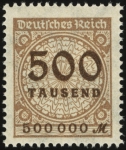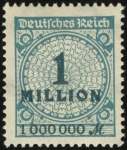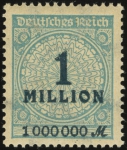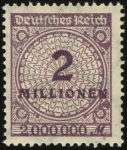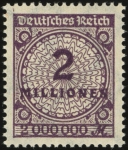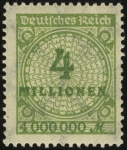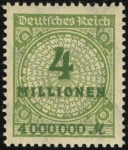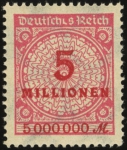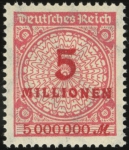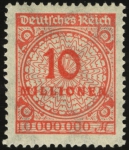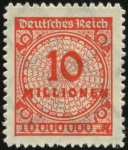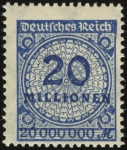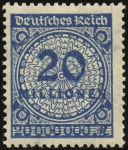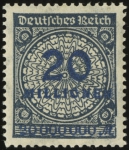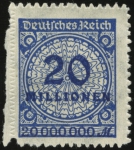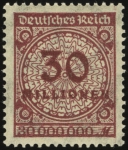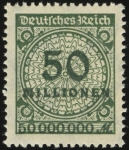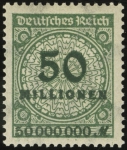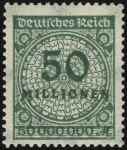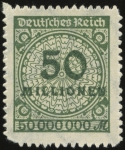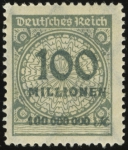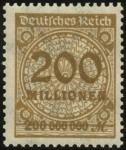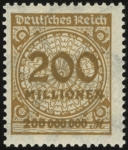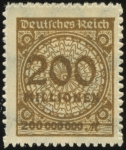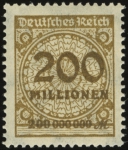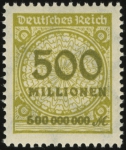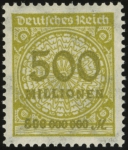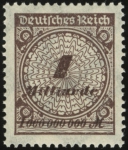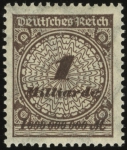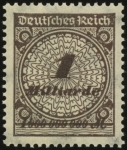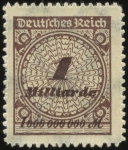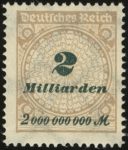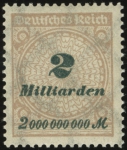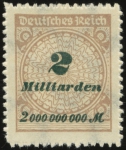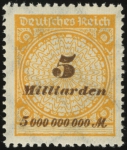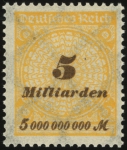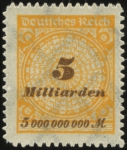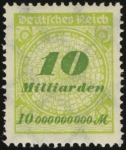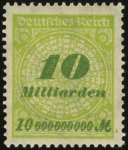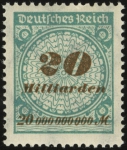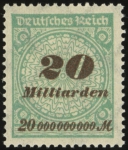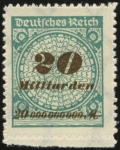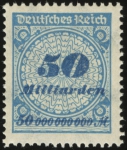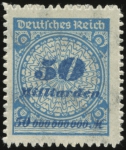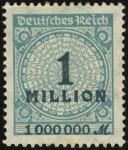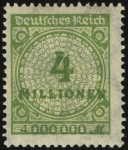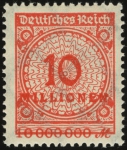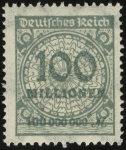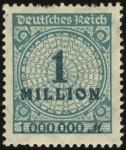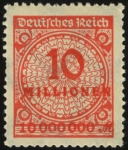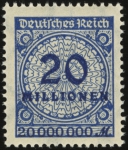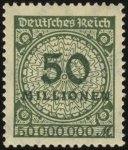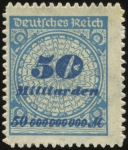Rosette Inflation Issues
This set of inflation overprints came into use in late October-November 1923.
Numerous varieties exist of several of the issues due to varying printing methods and perforations.
The P-suffix issues are flat plate printings and the W-suffix are rotary press printings. They can be distinguished by the size of the printed area:
- P — 17.7 mm x 21.5 mm
- W — 18.0 mm x 22.0 mm
Two recurring plate flaws exist across the issues. The first is a broken (“sprung”) rosette on the left of the design, denoted by the “HT” suffix. This plate flaw can be found at positions 12, 18, 63, & 68 of come printings.
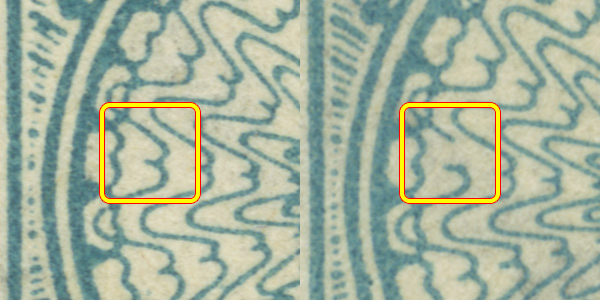
Normal (left) & Broken [“Sprung”] Rosette (right)
Additionally, those printing which have the broken rosette flaw also have, at positions 43, 48, 93, & 98, another plate flaw in the lower left corner, denoted by the “PE I” suffix.
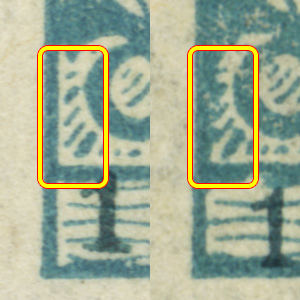
Normal (left) & Plate Flaw (right)
Numerous additional plate flaws exist on the individual stamps within the set, including the following.
Set Date(s)
Watermark(s)
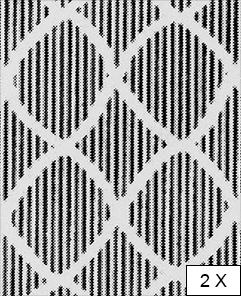
Album Page(s)
Rosette Inflation Issues
This set of inflation overprints came into use in late October-November 1923.
Numerous varieties exist of several of the issues due to varying printing methods and perforations.
The P-suffix issues are flat plate printings and the W-suffix are rotary press printings. They can be distinguished by the size of the printed area:
- P — 17.7 mm x 21.5 mm
- W — 18.0 mm x 22.0 mm
Two recurring plate flaws exist across the issues. The first is a broken (“sprung”) rosette on the left of the design, denoted by the “HT” suffix. This plate flaw can be found at positions 12, 18, 63, & 68 of come printings.

Normal (left) & Broken [“Sprung”] Rosette (right)
Additionally, those printing which have the broken rosette flaw also have, at positions 43, 48, 93, & 98, another plate flaw in the lower left corner, denoted by the “PE I” suffix.

Normal (left) & Plate Flaw (right)
Numerous additional plate flaws exist on the individual stamps within the set, including the following.

